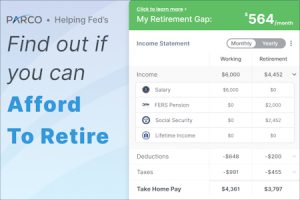Posted on Thursday, 21st July 2016 by Dennis Damp
 Print This Post
Print This Post
OK, I might have been a little too gracious in my June article titled Long Term Care Insurance – Is it worth the cost? I received a notice from the Federal Long Term Care insurance provider increasing our premiums by over 100 percent in less than 7 months from our last increase in January!!! I was comfortable with our coverage and the premiums until I received this notice today.
I find it difficult to comprehend how any company can warrant such a huge increase when we weren’t scheduled for another increase for 18 months. I reported in my June article that in the private sector MetLife, according to the Kiplinger’s Retirement Report, “requested rate increases of 43% to 60%, and the insurance department approved a 20% increase.” Other providers requested increases of up to 88%. The states stepped in and softened the blow, who will soften the blow for federal employees and annuitants?
My premium for a daily benefit of $203 for 5 years with the Future Purchase Option (FPO) increased from $77.17 monthly to $174.40 and my wife’s premium increased correspondingly. The new premium is over twice my current premium! It feels like highway robbery to me.
We all have until September 30, 2016 to make our elections. If we do nothing the new premiums go into effect starting November 1, 2016. I also stated in the previous article that, “In the private sector many are paying thousands more annually and getting hit with huge premium increases.”
I can only imagine what federal employees will have to pay for the Automatic Compound Inflation Option (ACIO) coverage that is considerably more expensive than our FPO coverage. This isn’t anything new, under the Affordable Care Act (ACA), the majority of health care exchanges are either closed or contemplating closing because they simply can’t make a profit due to the cumbersome and limiting ACA rules and regulations. Premiums have skyrocketed for them as well and unfortunately most providers have increased deductable payments to such levels that members won’t go to their doctors because they can’t afford to pay the required deductable.
John Hancock does provide options to retain the same or lower premium with drastically reduced benefits. In my case I can reduce my coverage from 5 years to 3 years and my daily amount decreases $9 to $194.00 with total benefits decreasing $158,045 to $212,430. I can also take a paid-up, limited benefit and no future premiums, that would give me $203 daily with a total lifetime maximum benefit of $8,777.82! Wow, how generous can you get? I’ve been paying into this system since its inception back in 2004.
Review your options carefully, there are a number to consider, before making an election. I believe I’ll take the reduced benefit options with the same or slightly smaller premium after I put this aside for a week or two and calm down.
If you haven’t received your notice yet don’t be shocked when you open the envelop. I immediately called Long Term Care Partners at 1-800-582-3337 to express my concerns. Basically they repeated verbatim the explanations that are in the notice. My next call will be to my Congressman and then to NARFE. I hope all of you will do the same.
Retiree Employment Update
Employers recruiting federal retirees and those soon to retire post jobs on our Jobs Board. A good number of new listings were posted this month including a senior software engineer earning 6 figures, an assistant human resource director, commercial lending officer and others. Retirees are encouraged to apply. Other positions are for civilian pay, project managers, and various medical specialists to name a few.
If you are planning on retiring soon and have an active security clearance many companies are recruiting in many specialties. Visit the Security Clearance Center to research potential employment opportunities.
Private companies, contractors, and state government departments use our Jobs Board to hire skilled federal retirees for part and full time positions nationwide. Many opportunities exist for those looking to supplement their retirement income or to start a second career. We provide this free job listing service to companies that are seeking to hire experienced retired federal workers.
Request a Retirement Benefits Summary & Analysis. Includes projected annuity payments, income verses expenses, FEGLI, and TSP projections.
Helpful Retirement Planning Tools
Distribute these FREE tools to others that are planning their retirement
- Retirement Planning Guide
- Master Retiree Contact List (Important contact numbers and information)
- How to be Financially Prepared When You Retire
- How to be Emotionally and Physically Prepared When You Retire
- 2016 Leave & Schedule Excel Chart (FREE Excel chart tracks actual leave balances)
- Survivor’s Guide
- Estate Planning Guide (An 11 part series that will help readers prepare for retirement, understand basic estate planning techniques, and compile their personal “Survivor’s Guide” binder.)
Visit our other informative sites
Disclaimer: Opinions expressed herein by the author are not an investment or benefit recommendation and are not meant to be relied upon in investment or benefit decisions. The author is not acting in an investment, tax, legal, benefit, or any other advisory capacity. This is not an investment or benefit research report. The author’s opinions expressed herein address only select aspects of various federal benefits and potential investment in securities of the TSP and companies mentioned and cannot be a substitute for comprehensive investment analysis. Any analysis presented herein is illustrative in nature, limited in scope, based on an incomplete set of information, and has limitations to its accuracy. The author recommends that retirees, potential and existing investors conduct thorough investment and benefit research of their own, including detailed review of OPM guidance for benefit issues and for investments the companies’ SEC filings, and consult a qualified investment advisor. The information upon which this material is based was obtained from sources believed to be reliable, but has not been independently verified. Therefore, the author cannot guarantee its accuracy. Any opinions or estimates constitute the author’s best judgment as of the date of publication, and are subject to change without notice. The author explicitly disclaims any liability that may arise from the use of this material.
Posted in BENEFITS / INSURANCE, ESTATE PLANNING, FINANCE / TIP, RETIREMENT CONCERNS, SURVIVOR INFORMATION
Comments (1)|  Print This Post
Print This Post



